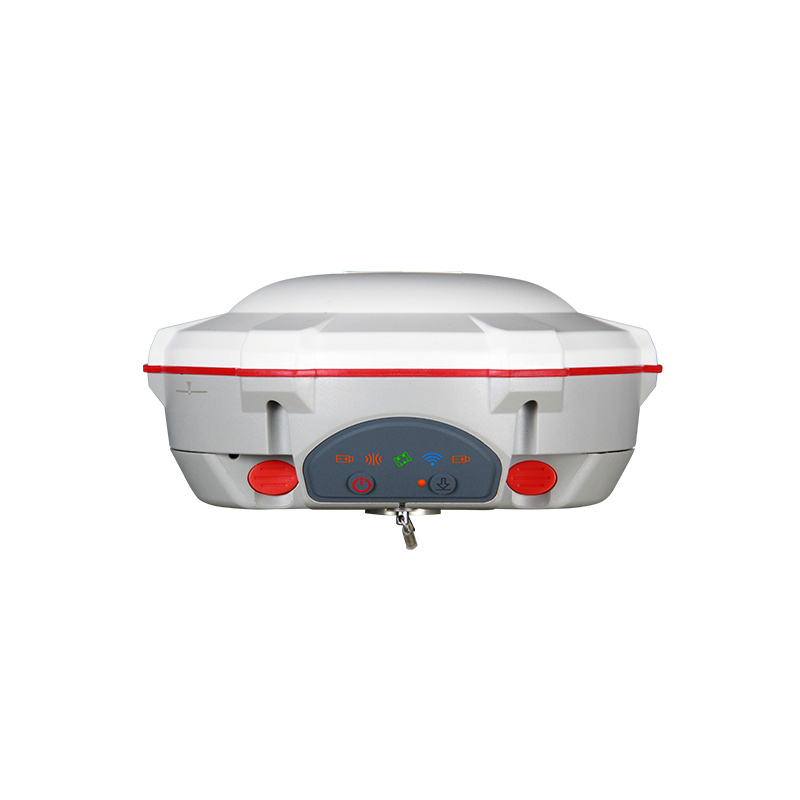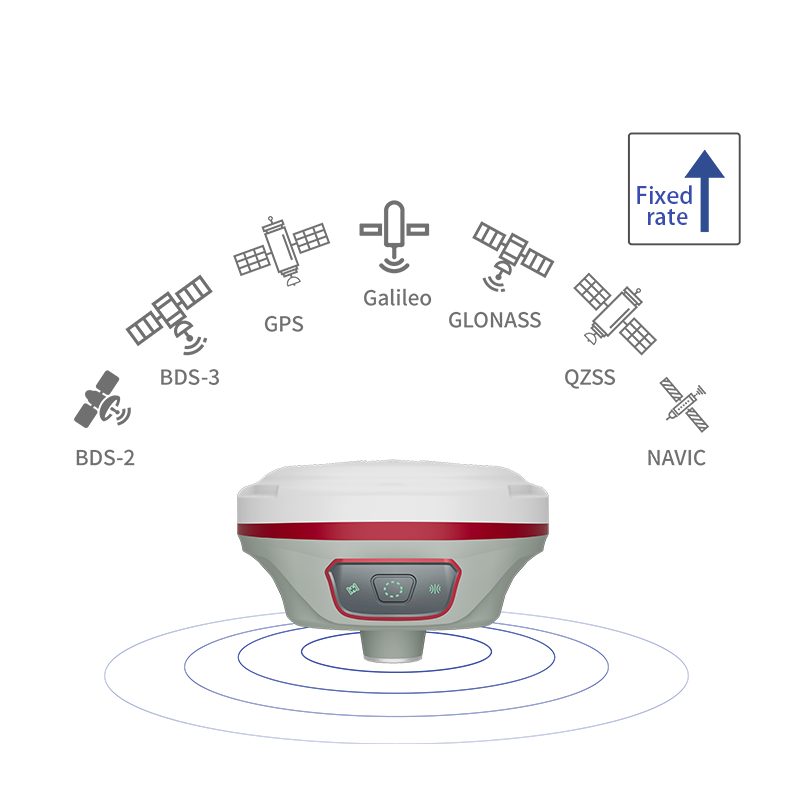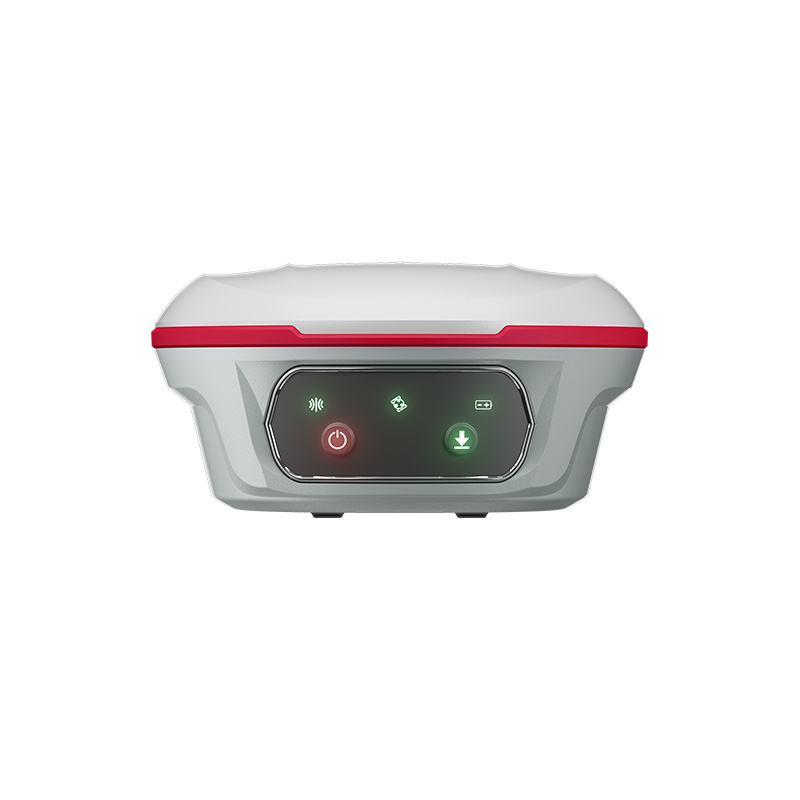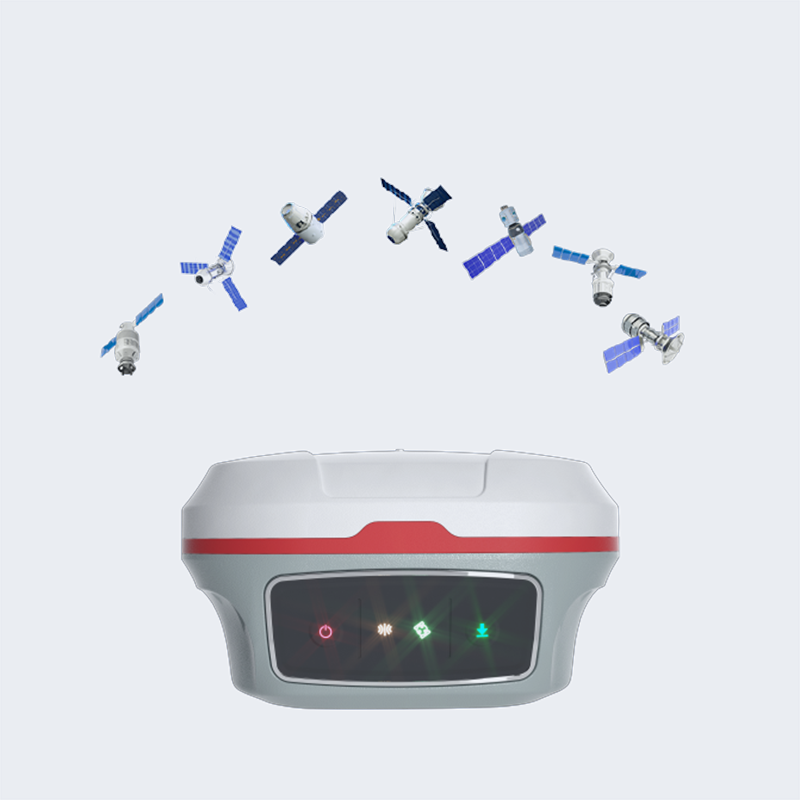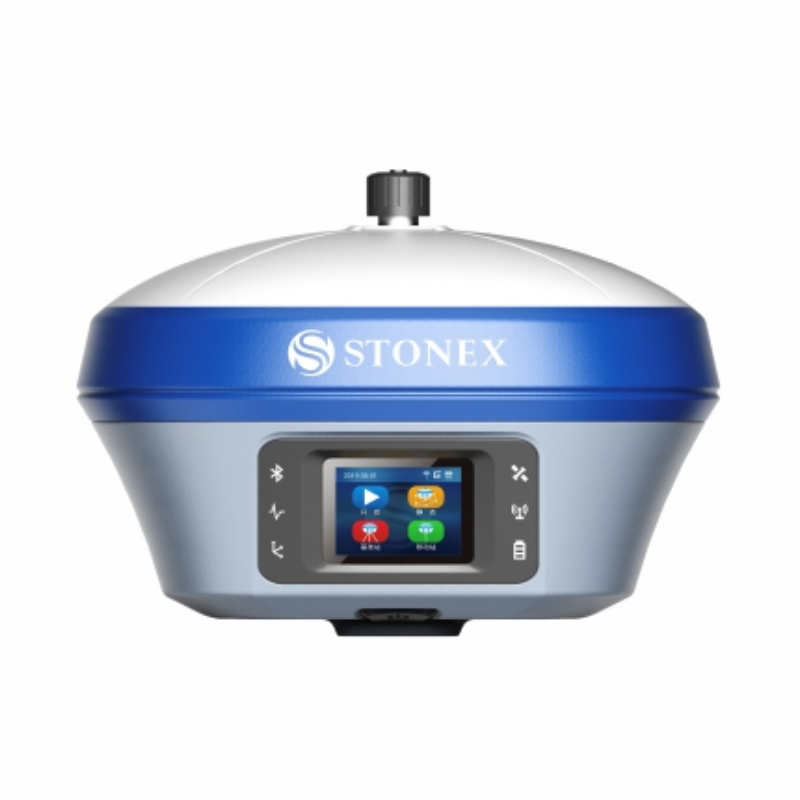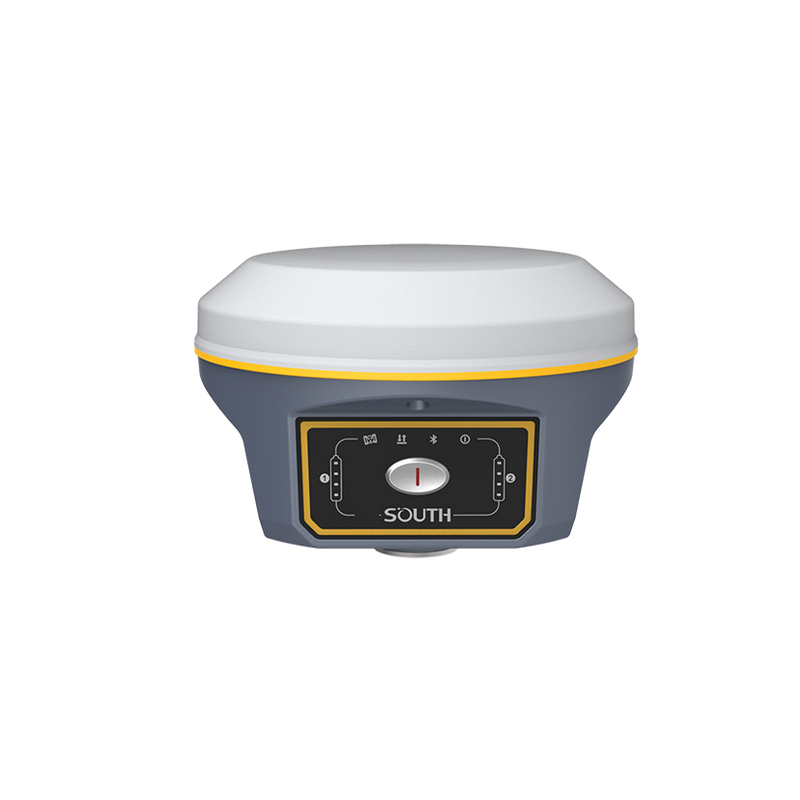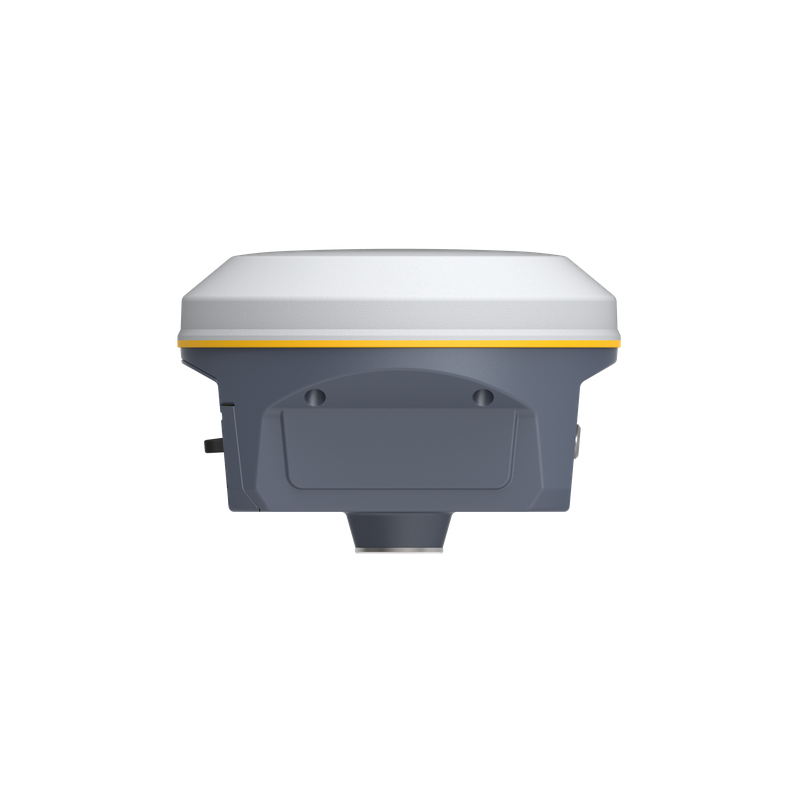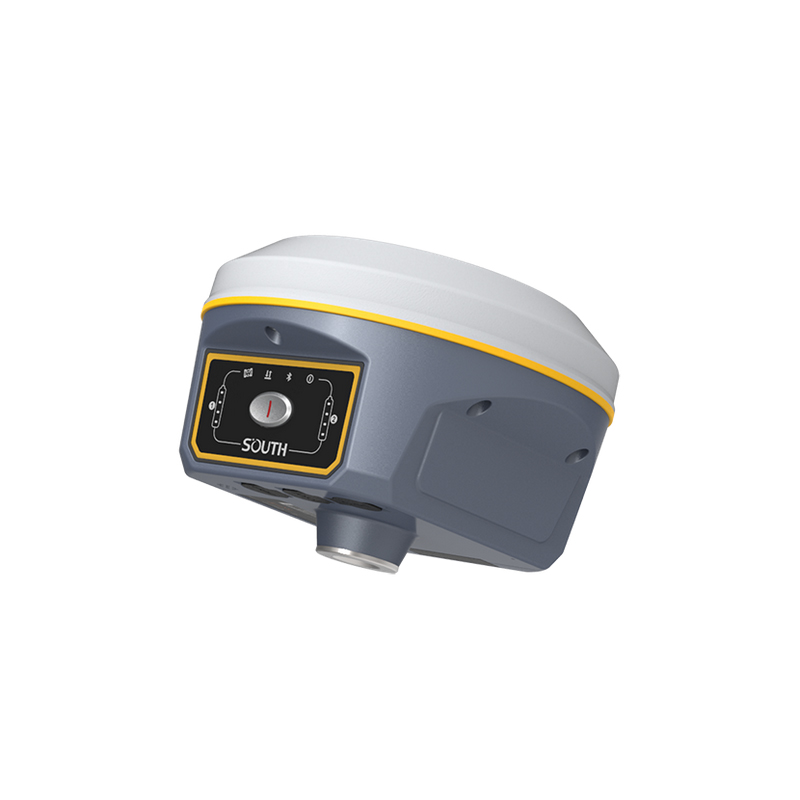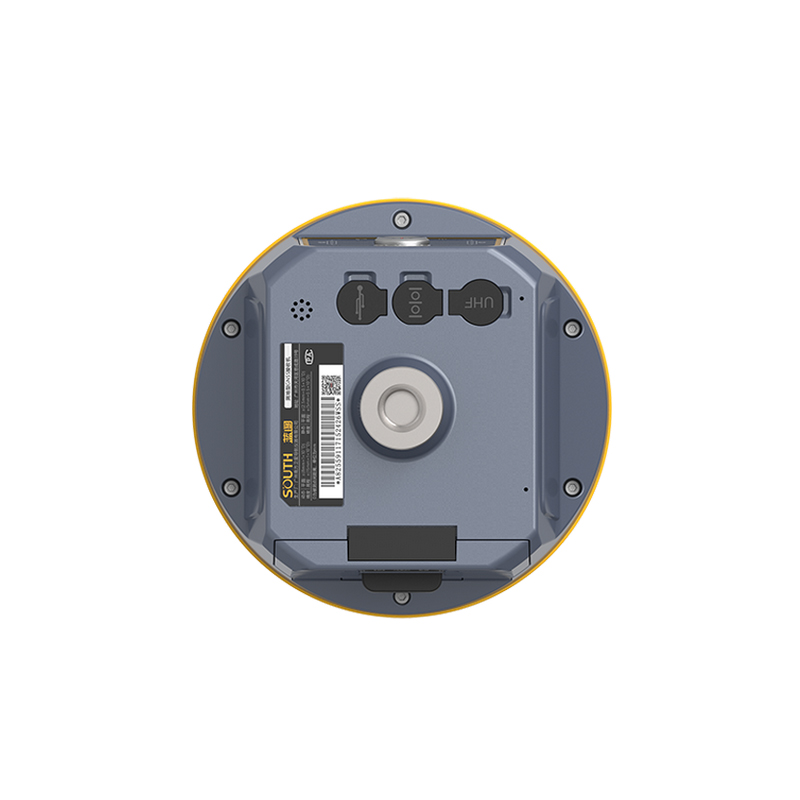01
South Galaxy G9 GNSS RTK Measurement System Instrument for Measuring Test Instrument Rover And Base With 1598 Channels
Technical Features
Long-Distance Transmission and Reception: Utilizing a multi-polarization, multi-frequency integrated design, coupled with the latest Farlink radio communication technology, it achieves a long-distance transmission and reception range of 10km with the internal radio.
Automatic Correction: Equipped with an MU inertial measurement sensor, it automatically corrects coordinates based on the tilt direction and angle of the centering pole, eliminating the need for strict centering, achieving "point-and-measure" functionality.
Long Battery Life: It comes with two 3400mAh high-performance lithium batteries that can be replaced without interrupting power. In the handheld network mode, it offers an ultra-long battery life of up to 14 hours, ensuring worry-free operation.
Performance Parameters
Positioning Accuracy: The Lantu RTK has high positioning accuracy, with a code-differential GNSS positioning horizontal accuracy of 0.25m+1ppm RMS and a vertical accuracy of 0.50m+1ppm RMS. The typical accuracy for SBAS differential positioning is less than 5m 3DRMS.
Initialization Time: The initialization time is less than 10 seconds, with an initialization reliability of over 99.9%.
Positioning Output Frequency: The positioning output frequency range is 1Hz~20Hz, catering to various measurement needs.
Application Scenarios
The Lantu RTK is widely used in drone aerial surveying, 3D laser measurement, indoor positioning and navigation, precise location services, deformation monitoring, precise monitoring and measurement for rail transit, and other fields. It is also suitable for spatio-temporal geographic information and surveying and mapping education.
User Feedback
Users generally believe that the Lantu RTK offers high precision, high stability, and ease of operation. In practical applications, the Lantu RTK significantly improves measurement efficiency and reduces measurement costs. Additionally, its powerful data processing and real-time sharing capabilities have also received positive feedback from users.
Product Description
High integration creates convenient field work Carrying a new RTK integration technology, Bluetooth, WIFl, GSM antennas are highly integrated into GNSS antenna, that brings you an unprecedented experience of field surveying, making the field work more convenient and easier.
Advantageous SoC (System-on-Chip) platform The GNSS board of G9 is upgraded to the most advanced SoC which is a high integration chip that has 1598 channels for multi-constellation and multi-frequency tracking, efficiently suppresses the interference signals,and obtains higher quality observation data from GNSS constellations.
Intelligent Base signallocking technology Using one-to-one signal tracking and locking technology, and the independent frequency under Farlink protocol, the G9 rover can continuously lock and capture the target base station signal to reduce cross-frequency interference even though other base stations are working nearby with the same channel.The ultimate internal UHF performance The G9 breaks through the constraints on wavelengths based on a SOUTH high-performance UHF module with Farlink communication technology, which increases signal sensitivity and transmission efficiency, and really achieves the goal of 10km ultra-long-distance working range.
Powerful system management--Smart ROS G9 is integrated with the ROS system, which comes with intelligent deployment of multi-mode hardware components, strong computing power and an intelligent scheduling mechanism. and coupling with an ultra-fine memory management mechanism, making the fluency and running speed of the receiver comprehensively improved.
Efficient and reliable tilt measurement Built-in high-performance IMU automatic compensator corrects the coordinates to the pole tip, assisting users to quickly and accurately measure or stake out points at will without strict leveling the receiver. The tilt angle range can achieve up to 60°. Furthermore. the compensation is still available even though the fixed solution is lost for a short time. Users can continue the survey after the fixed solution recovers without initializing the IMU module again, which helps surveyors boost productivity by 30 percent.
Superlong working hours G9 also adopts a dual-battery system design so that it can achieve longer battery life while maintaining strong performance. The hot replaceable function allows you to change the battery one by one when power is low. You can continue with work without switching off the receiver. The G9 receiver is able to continuously work for about 15 hours in Rover+Bluetooth mode with 2 batteries. Power volume is visible synchronously on the control panel.
Logistics information



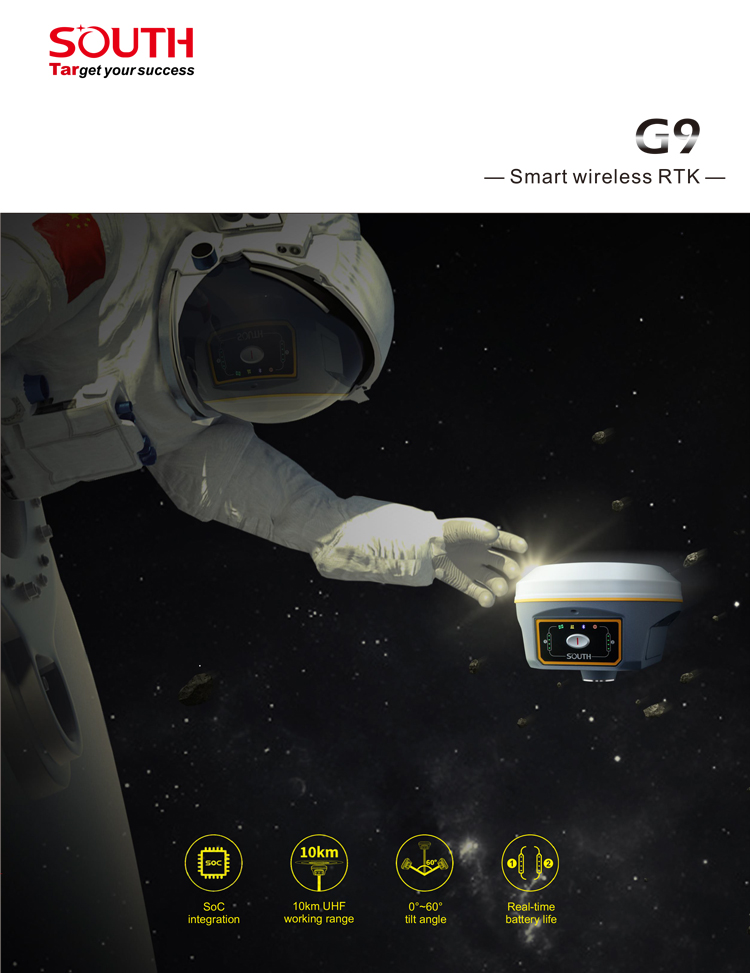
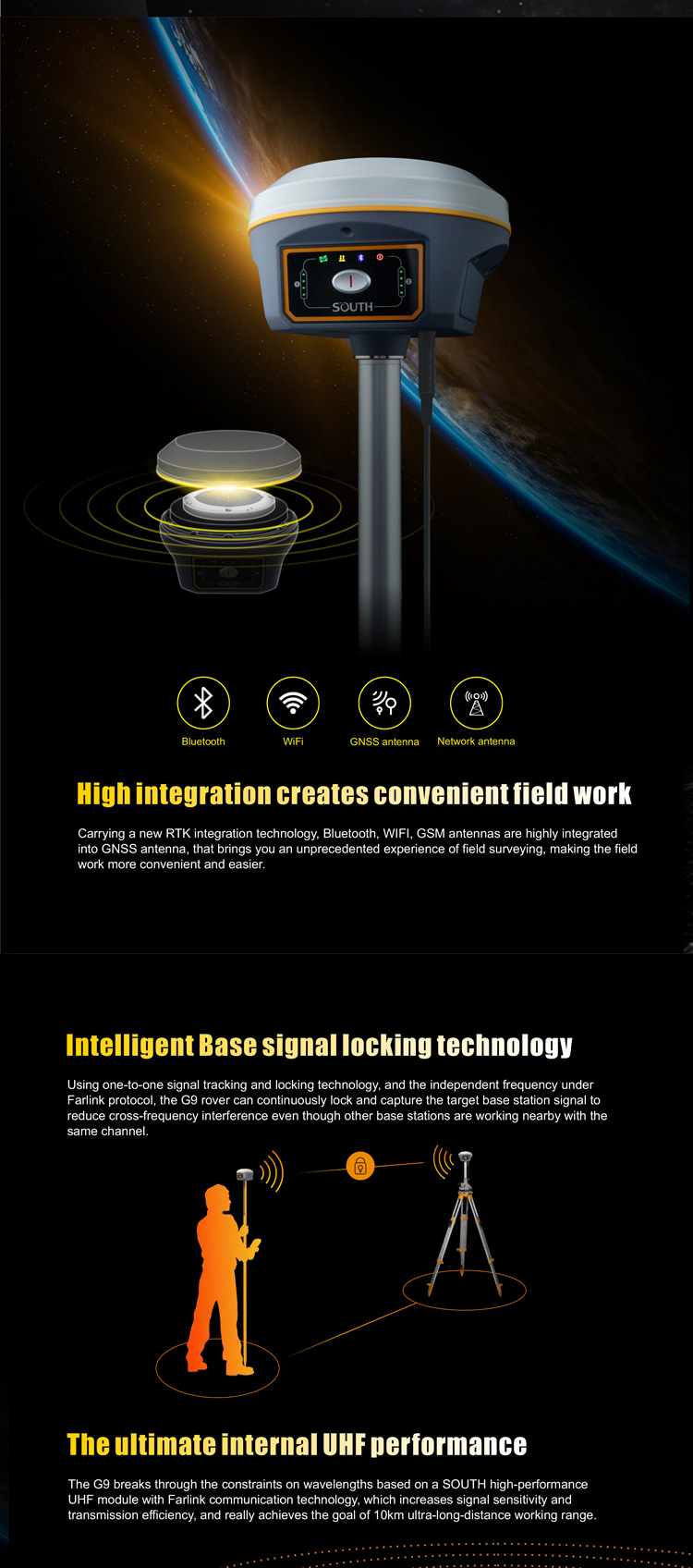
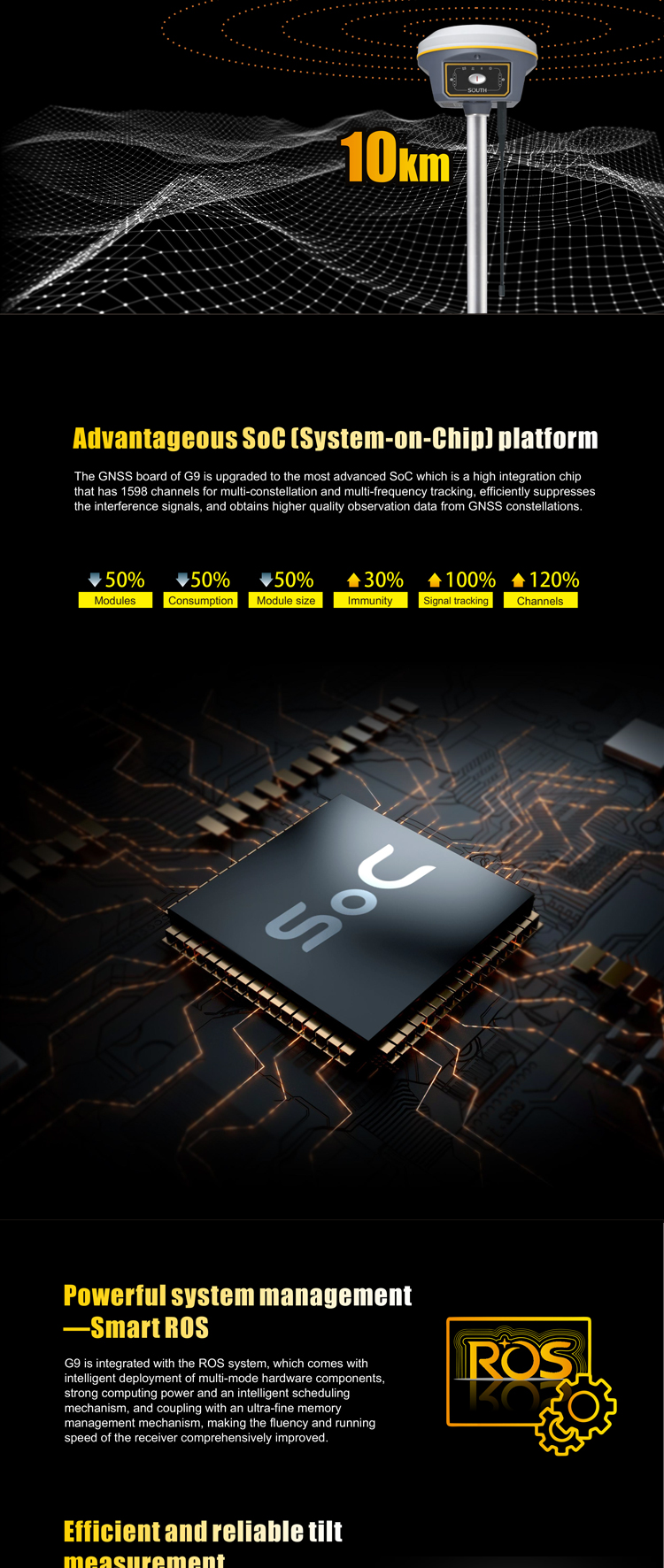

Logistics information



technical parameter
| GNSS Features | Channels | 1598 |
| GPS | L1C/A, L2C, L2P, L5 | |
| GLONASS | L1C/A,L1P,L2C/A,L2P,L3* | |
| BDS | BDS-2: B1I, B2I, B3I BDS-3: B1I, B3I, B1C, B2a, B2b* | |
| GALILEO | E1, E5A, E5B, E6C, AltBOC* | |
| SBAS(WAAS/MSAS/EGNOS/GAGAN) | L1C/A, L5* | |
| IRNSS | L5* | |
| QZSS | L1, L2C, L5* | |
| MSS L-Band | BDS-PPP | |
| Positioning output rate | 1Hz~20Hz | |
| Initialization time | < 10s | |
| Initialization reliability | > 99.99% | |
| Positioning Precision | Code differential GNSS | Horizontal: 0.25 m + 1 ppm RMS Vertical: 0.50 m + 1 ppm RMS |
| Static(long observations) | Horizontal: 2.5 mm + 0.1 ppm RMS Vertical: 3 mm + 0.4 ppm RMS | |
| Static | Horizontal: 2.5 mm + 0.5 ppm RMS Vertical: 3.5 mm + 0.5 ppm RMS | |
| Rapid static | Horizontal: 2.5 mm + 0.5 ppm RMS Vertical: 5 mm + 0.5 ppm RMS | |
| PPK | Horizontal: 3 mm + 1 ppm RMS Vertical: 5 mm + 1 ppm RMS | |
| RTK(UHF) | Horizontal: 8 mm + 1 ppm RMS Vertical: 15 mm + 1 ppm RMS | |
| RTK(NTRIP) | Horizontal: 8 mm + 0.5 ppm RMS Vertical: 15 mm + 0.5 ppm RMS | |
| RTK initialization time | 2-8s | |
| SBAS positioning | Typically < 5m 3DRMS | |
| IMU | Less than 10mm + 0.7 mm/° tilt to 30° | |
| IMU tilt angle | 0° ~ 60° | |
| Hardware Performance | Dimension | 154mm(φ)× 106mm(H) |
| Weight | 1.3kg (battery included) | |
| Material | Magnesium aluminum alloy shell | |
| Operating temperature | -45℃ ~ +65℃ | |
| Storage temperature | -45℃ ~ +85℃ | |
| Humidity | 100% Non-condensing | |
| Waterproof/Dustproof | IP68 standard, protected from long time immersion to depth of 1m | |
| IP68 standard, fully protected against blowing dust | ||
| Shock/Vibration | Withstand 2 meters pole drop onto the cement ground naturally | |
| Power consumption | 2W | |
| Power supply | 6-28V DC, overvoltage protection | |
| Battery | 7.4V 3400mAh x 2 rechargeable, removable Li-ion battery | |
| Battery life(Dual-battery) | 15h(Rover Bluetooth mode) | |
| WIFI | Modem | 802.11 b/g standard |
| WIFI hotspot | AP mode, Receiver broadcasts its hotspot form web UI accessing with any mobile terminals | |
| WIFI datalink | Client mode, Receiver can transmit and receive correction data stream via WiFi datalink | |
| Communications | I/O Port | 5-PIN LEMO external power port + RS232 |
| 7-PIN LEMO(USB, OTG and Ethernet) | ||
| 1 PPS data interface | ||
| SIM card slot(standard) | ||
| Internal UHF | Receiver and transmitter 1/2/3W (Just receiver 0.01W for Russia) | |
| Frequency range | 410 - 470MHz | |
| Communication protocol | Farlink, Trimtalk450s, SOUTH, HUACE, ZHD | |
| Communication range | Typically 10km with Farlink protocol | |
| Cellular mobile network | 4G network communication module | |
| Bluetooth | BLEBluetooth 4.0 standard, Bluetooth 2.1 + EDR | |
| NFC Communication | Realizing close range (shorter than 10cm) automatic pair between receiver and controller (controller requires NFC wireless communication module else) | |
| Data Storage/Transmission | Storage | 16GB SSD |
| Automatic cycle storage (The earliest data files will be removed automatically while the memory is not enough) | ||
| Support external USB storage | ||
| Data transmission | Plug and play mode of USB data transmission | |
| Supports FTP/HTTP data download | ||
| Data format | Static data format: STH, Rinex2.01, Rinex3.02, etc. | |
| Differential format: CMR(GPS only), CMR+(GPS only), RTCM 2.3, RTCM 3.0, RTCM 3.1, RTCM 3.2 | ||
| Navigation data format: NMEA 0183, PJK, Binary code | ||
| Network model support: VRS, FKP, MAC, fully support NTRIP protocol | ||
| Sensors | Electronic bubble | Controller software can display electronic bubble, checking leveling status of the carbon pole in real-time |
| IMU | Built-in IMU module, calibration-free and immune to magnetic interference | |
| Thermometer | Built-in thermometer sensor, adopting intelligent temperature control technology, monitoring and adjusting the receiver temperature | |
| User Interaction | Operating system | Linux |
| Buttons | Single button | |
| Indicators | 4 color LED indicators, Battery indicator | |
| Web interaction | With the access of the internal web interface management via WiFi or USB connection, users are able to monitor the receiver status and change the configurations freely | |
| Voice guidance | It provides status and operation voice guidance, and supports Chinese/English/Korean/Spanish/Portuguese/Russian/Turkish | |
| Secondary development | Provides secondary development kit, and opens the OpenSIC observation data format and interaction interface definition | |
| Cloud service | The powerful cloud platform provides online services like remote manage, firmware update, online register and etc. |

